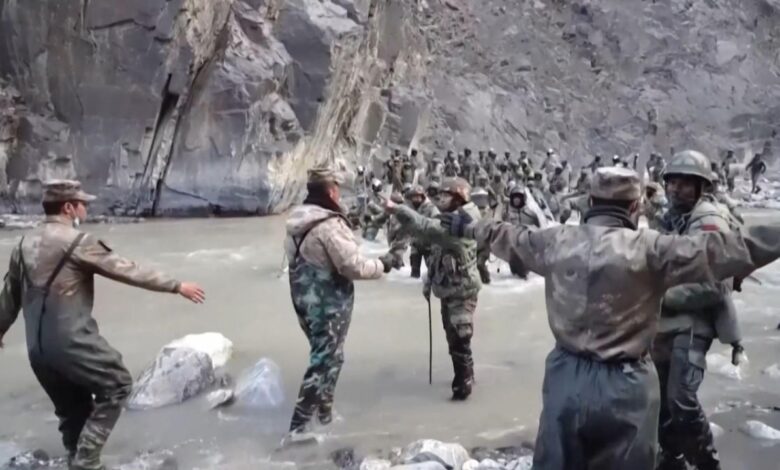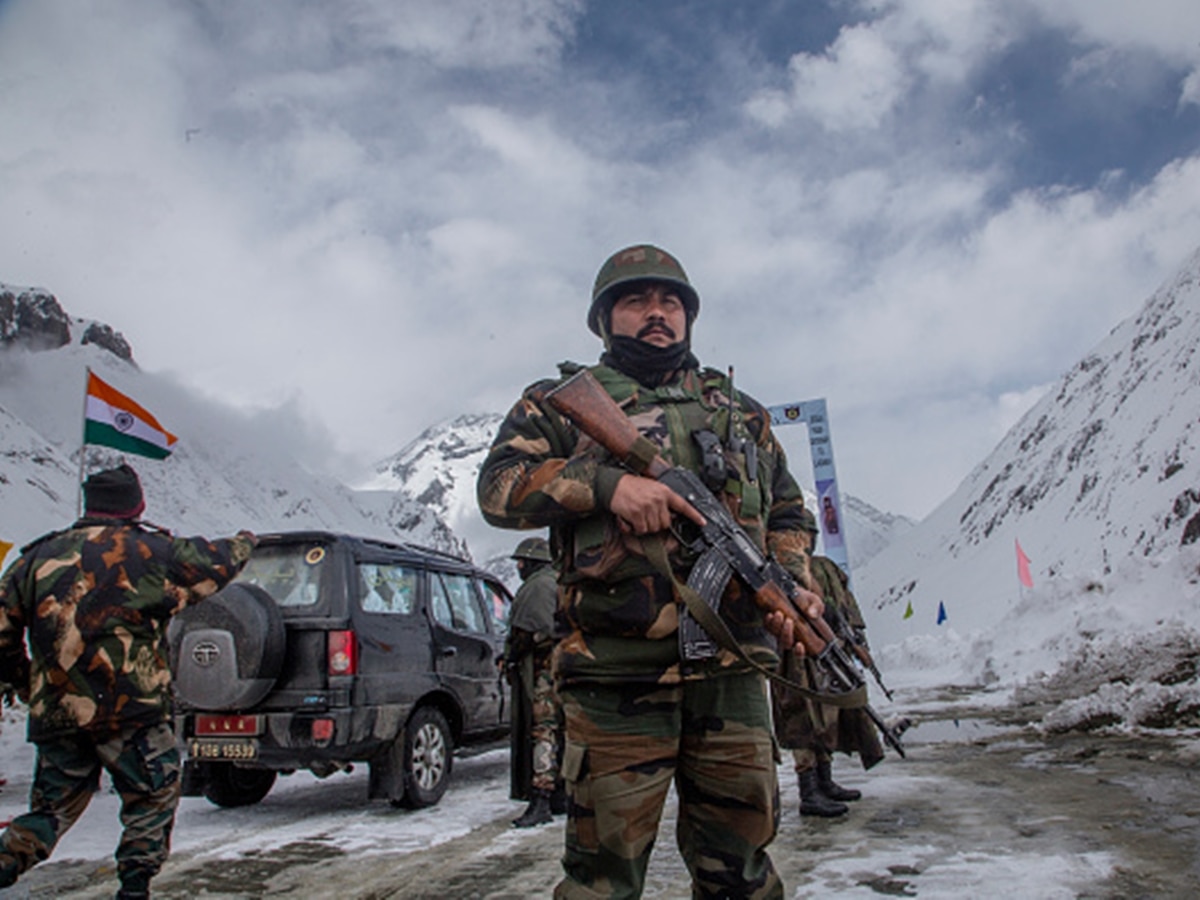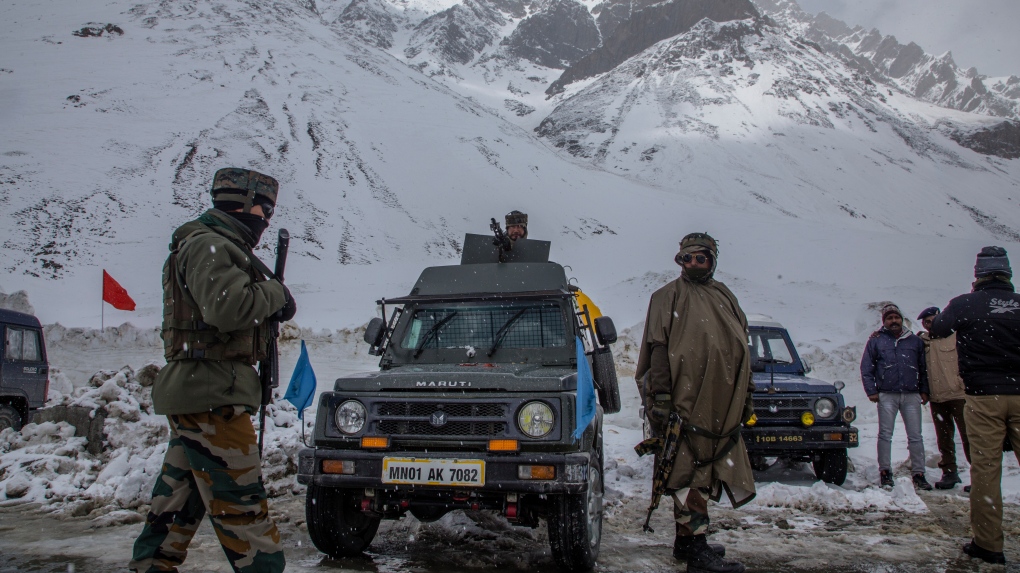The new India-China Tawang crisis: Where, why, and what now?

In the Yangtse area of the current Tawang sector of Arunachal Pradesh, soldiers from both sides engaged in combat. China and India disagree over Tawang, a city located within the state.
After Defence Minister Rajnath Singh informed Parliament that “PLA troops attempted to transgress the LAC in Yangtse area of main Tawang Sector and also unilaterally change the status quo,” the PLA asserted that the early December 9 clash was caused by Chinese soldiers on routine patrol on their side of the main Line of Actual Control (LAC) in the current “Dongzhang” area being blocked by all Indian soldiers who had “illegally crossed the line.”
Senior Colonel Long Shaohua, spokesman for the PLA’s Western Theatre Command, claimed in a Beijing-based PTI report that “The professional, firm, and consistent response of our troops has assisted in calming the situation. In order to maintain control and calm over the frontline forces, we kindly request that the Indian side strictly regulate, restrain, and work with the Chinese side.
According to Wang Wenbin, a spokesman for the Chinese Foreign Ministry, “the current border situation between China and also India is generally stable,” as per the PTI report.
Two and a half years had passed since the two sides engaged in a bloody battle in Ladakh’s Galwan Valley in June 2020.
India and China had a fight in Tawang.
In the Yangtse area of the main Tawang sector of Arunachal Pradesh, soldiers from both sides engaged in combat. China has claimed Tawang and almost the entire state of Arunachal Pradesh. Regarding the general border issue, it is one of the more contentious areas of contention between China and India.
The sixth Dalai Lama was also born in Tawang, which is also a popular destination for pilgrims who practise Tibetan Buddhism. The 14th Dalai Lama sought refuge in Tawang in 1959 after entering India from Tibet and stayed there for a short time before continuing his journey.
There are three “agreed areas” in Tawang where Indian and Chinese views on the LAC diverge. One of these places is Yangtse, which is 25 kilometres north of the Lungroo grazing area and roughly 25 kilometres from Tawang. As a result, there have been numerous instances of “physical contact” between the Indian Army and the PLA, especially considering that the high ground is on the Indian side, and giving it a commanding view of the Chinese side.
A fight broke out in Yangtse in October of last year after patrol parties from the Indian Army and the PLA in the area came into contact. No one was harmed. In 2016, a similar incident was documented.
Since the Galwan incident, which resulted in the deaths of 20 Indian soldiers and an undetermined number of Chinese soldiers, the December 9 incident is both the deadliest clash between the two sides in recent memory and the first to cause injuries.

A new India-China crisis context exists in Tawang.
Regarding the Yangtse incident, Defense Minister Singh made the same statements in both the Lok Sabha and also the Rajya Sabha. He asserted that Indian troops physically fought with the PLA to stop them from invading Indian territory and force them to retreat to their positions. He claimed that although there were injuries on both sides, no one was killed.
According to Brigadier Rahul Bhonsle (ret), who runs the online security analysis site Security Risks Asia, the PLA’s motivation for starting a new incident along the disputed border, this time in the east, “appears to be to extend the points of confrontation and keep the issue of the India-China border alive at a time when the world is engaged in overcoming multiple crises resulting from the War in Ukraine.”
At so-called “friction points,” or locations where the incursions took place and Indian patrolling parties were prevented from entering areas they had previously patrolled, the two parties engaged in 16 rounds of disengagement negotiations after the PLA incursions into eastern Ladakh in April-May 2020.
The disengagement has led to the creation of “buffer zones” in locations where both sides had been snooping around one another, including Galwan, Pangong Lake, Gogra, and Hot Springs. The pre-incursions state of affairs has not been restored, despite the fact that as a result, the probability of hair-trigger events has decreased.
The de-escalation of tensions that the plan aimed to achieve has proven to be challenging to accomplish; on the Chinese side, infrastructure development has continued at a rapid clip, including the building of roads and even two bridges over Pangong Tso that give the PLA access to the lake’s southern bank.
The Indian side has made an effort to match the speedy roadwork and construction on the Indian side. At this time, there is no sign that the Chinese would be open to discussing how to settle the “friction points” between Depsang and Demchok.
In the past two years, troops stationed at Ladakh in the forward areas of the LAC have become commonplace. Analyzing China’s activity in the eastern sector against this backdrop of military tensions is important because it divides India’s security planners’ attention as it adapts to changing conditions.
Additional causes to be suspicious
Singh claimed that the Yangtse situation had been defused after the two sides disengaged and the regional commanders convened a flag meeting. “The Chinese side was exhorted to stop this behaviour and maintain peace along the border. According to the speaker, the matter has also been brought up with the Chinese government through diplomatic channels.

The open dialogue on border-related issues between the two sides was continuing through diplomatic and military channels, according to Wang, the foreign ministry’s spokesman in Beijing.
The incident will undoubtedly increase India’s concerns about China’s motives, though. China alleged that the joint Indian-US military exercise Operation Yudhabhyas had violated border agreements signed in 1993 and 1996 days prior to the Yangtse incident.
New Delhi claimed that China’s actions in Ladakh amounted to the dismantling of laboriously negotiated border agreements. S. Jaishankar, the minister of external affairs, thinks that calm and peace along the border are prerequisites for normalising India-China relations.
Rajnath Singh, the defence minister, reported to Parliament on Tuesday, December 13, that the Indian Army had resisted a Chinese attempt to change the situation along the main Line of Actual Control (LAC) in Arunachal Pradesh and had driven back soldiers from the People’s Liberation Army who were involved in the incursion attempt. He claimed that some of the Chinese and Indian soldiers had wounds. Here is what we currently know.
What transpired in Tawang, Arunachal Pradesh, during the China-India conflict?
By conducting an incursion (“atikraman”) across the LAC in the Yangtse region of Arunachal Pradesh’s Tawang sector on December 9, PLA troops attempted to alter the status quo unilaterally, the Defence Minister informed the Lok Sabha.
Indian troops responded to this Chinese attempt with “firmness,” which sparked a fight (“haathapai”). The Defence Minister declared, “Our Army stopped the PLA incursion and also forced them to return to their post.”
He stated that although there had been a “jhadap” (clash), no Indian soldiers had been killed or suffered life-threatening injuries. On December 11, a flag meeting between the local Army commander and his Chinese counterpart took place, during which the Chinese side was requested to maintain the border’s tranquilly. According to Rajnath Singh, the matter has also been discussed diplomatically with the Chinese side.
On the LAC, what sort of a “clash” was this?
The Indian Express received information from sources that soldiers on both sides were using sticks and canes to beat one another. Indian soldiers who were hurt during the conflict are reportedly receiving medical care in a hospital in Guwahati. Since the deadly Galwan incident in current eastern Ladakh in June 2020, this was the PLA’s closest encounter with Indian forces.
The Army reported on December 12 that “a few personnel from both sides sustained minor injuries as a result of the feet-off.” However, according to the Army, “both sides immediately disengaged from the area.”

Where and how did the China-India conflict start?
A fight broke out at a nullah along the main LAC in the Tawang heights close to Yangtse on December 9 at 3 a.m. This LAC section is one of the “agreed disputed areas” between the current two sides, according to military sources.
Although there are troops from both China and India stationed on either side of the nullah, 300 Chinese soldiers entered the Indian side on this particular night.
When 70 to 80 Indian troops heard the sentries were being attacked, they quickly mobilised in the middle of the night to push them back because there were no signs of the approaching intruders. Several hours were reportedly spent engaging in fierce hand-to-hand combat with sticks and canes.
The Chinese soldiers moved to the Indian side for what reason?
According to a military source who spoke to the Indian Express, “there are areas of differing perception along the LAC in the Tawang sector of Arunachal Pradesh, where both sides patrol the main area up to their claim lines.” In 2006, the pattern started.
In June 2016, about 250 PLA soldiers entered the region in a manner similar to this one, but no clashes were noted. According to a military officer who served in the area, it is impossible to predict when the PLA will carry out such operations because “the Chinese perpetually control the main escalatory ladder in that area” and do so “at their leisure.”
A senior government official claimed that the PLA “pre-planned” the offence for a “appropriate” time. Chinese troops are deployed in “top of the wall” positions with extensive infrastructure and supply routes in the described heavily forested skirmish zone.
The source also claims that some Indian troops left their positions during this time due to localised snowfall, giving the Chinese side an additional tactical advantage. Indian satellites had a difficult time capturing images of any troop buildup due to the heavy cloud cover.
Is the border dispute a component of a bigger picture?
China had complained about Operation Yudhabhyas, an India-US joint military exercise in the Uttarakhand hills at Auli, just a few days prior, alleging that it violated border agreements made in 1993 and 1996.
Under the leadership of New Delhi, the G20, a grouping of the world’s top economies that includes China, has started its presidency, and events related to this presidency have already started. At various locations along the 3,000-kilometer LAC, there have been ongoing military tensions.
At the G20 summit in Bali in month November, our Prime Minister Narendra Modi and President Xi Jinping met and exchanged courtesies but did not have a substantive discussion.

What is happening along the LAC while this is happening in Ladakh?
Only three months ago, in September, Indian and Chinese troops disengaged following a number of Chinese incursions in the area. During the 16 rounds of negotiations between military commanders that started in May 2020, this was the last of the identified “friction points.”
The two sides discussed leaving the area before the Galwan incident, which also claimed the lives of 20 Indian soldiers. Tensions in Ladakh are still being raised by China’s quick infrastructure development, including the construction of two bridges over mainly Pangong Lake that will shorten the time it takes the Chinese to mobilise on the southern bank, intrusions in Demchok, and the influx of Chinese troops into Depsang.
In a recent discussion of India-China relations, External Affairs Minister S. Jaishankar said that “the situation cannot be, and is not, normal” unless the border regions are calm and peaceful, agreements are followed, and no unilateral attempts are made to change the status quo. The Tawang incident has increased troop vigilance across the area.
edited and proofread by nikita sharma




